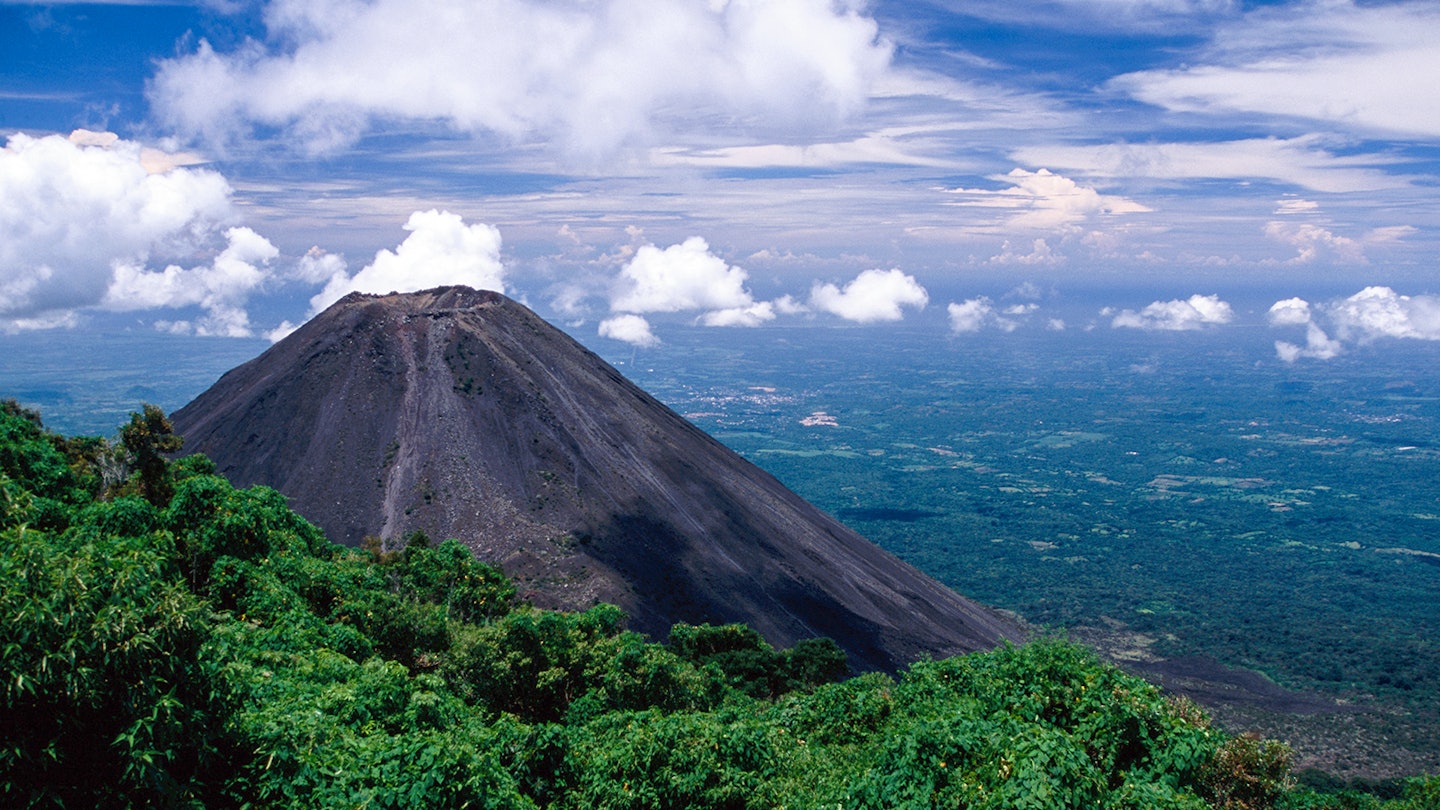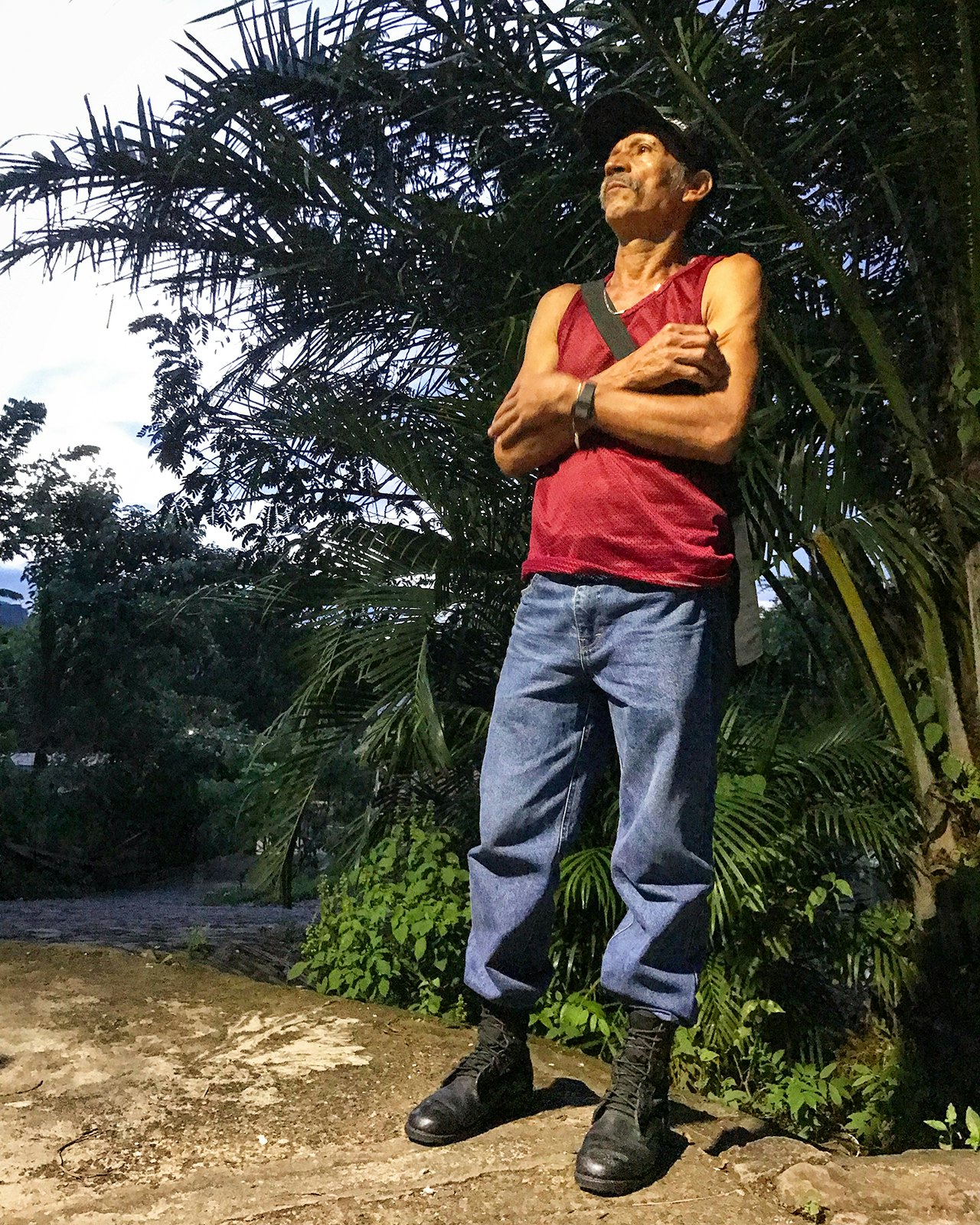Should El Salvador be on your travel bucket list?

Nov 29, 2017 • 10 min read

When people consider a trip to Central America, El Salvador probably isn’t the first country that comes to mind. The tiny nation has had its fair share of uncomplimentary headlines in recent years, but a trip to this mountainous little corner of the isthmus will turn any and all preconceived notions upside down.

El Salvador might lack some of the conventional trappings of a tourist destination, but what it offers is an unabashed genuineness. Though the country has endured a past pocked with war and economic instability, Salvadorans warmly welcome the opportunity to show the world the country’s real character.
Sprawling San Salvador
Upon arrival, travelers will find a dynamic country that’s relatively easy to explore due to its small size: the mountains of the west, the photogenic Ruta de las Flores, and the Pacific coast are all easily accessible from the capital city. The usual point of entry for international visitors, San Salvador is a sprawling web that spills across the neighboring valleys, hugging the base of its namesake volcano.
The city is frenetic, a seemingly impenetrable maze of urbanity, but that’s where you find all the fun. Entrepreneurs wander the lanes of stopped traffic selling everything from loaves of home-baked French bread to crispy fried plantain strips, and the highway rises and falls as it circles the city, giving great aerial views of the neighborhoods below. Despite its density, San Salvador is big on green spaces. Head over to the rainbow-colored streets of the Antiguo Cuscatlán neighborhood, grab a pupusa from one of its numerous shops and enjoy its cheesy goodness under one of the seemingly extraterrestrial ceiba trees that dot local plazas. The pupusa possibilities are endless, by the way – pair cheese with jalapeños, cilantro, shrimp, pumpkin, mushroom or a local flower called loroco, and wash it all down with a cold Pilsener.

Head downtown and you’ll find a city in the midst of rejuvenation; the government is pouring significant resources into giving some of the major plazas a facelift. This is an ideal place to learn about the indigenous origins and colonial history of the city, as well as the scars left by the civil war and the major earthquakes of 1986 and 2001. While you’re here, seek out the Iglesia El Rosario – the understated, opaque-looking exterior gives few hints concerning the magical stained glass that bathes the pews in kaleidoscopic light. Pop in for this visual treat and learn about the architecture and sculptures created by Salvadoran artist Ruben Martinez.
Suchitoto: El Salvador’s culture capital
A short drive out of the city due north will lead you through canopied country roads to Suchitoto, a small colonial town perched on a hill overlooking the vast Lago Suchitlán. The settlement was once the heart of the indigo trade, an industry exploited by the Spanish that later faded from view with the introduction of synthetic dye in the early 1900s. Today, however, El Salvador’s indigo (frequently touted as some of the best in the world due to the country’s volcanic soil) is making an artisanal comeback. Salvadoran cultural bodies have invested in the revitalization of the indigo industry in rural communities, and Japanese indigo artists have aided educational development (Japan is also home to high quality indigo).

Irma Guadrón runs Arte Añil, an indigo workshop and boutique housed in a lovely colonial building just off the town’s main plaza. For her, the pursuit of the indigo arts was a natural choice. “I believe life prepared me for this. Things were a little hard, because I was a single mother and living in Suchitoto is expensive. I had always looked for a way to be independent and I finally found the opportunity when I was invited to a training. Then I fell in love with it – I started researching the history of the Maya, of El Salvador and the role indigo played.” Today, Guadrón’s shop produces meticulously designed pieces for clients from all over the world, and visitors can learn how to dye their own garments (workshops run from $25 per person). Be careful with that dye, though – this writer can tell you that it stains fingers for at least a week.

Outside of indigo, Suchitoto is known as the country’s cultural capital. It hosts a yearly film festival, and it’s home to several local art cooperatives with a feminist bent, a surprising twist for a rural Salvadoran town. Stop by Centro Arte para la Paz, an initiative that supports victims of domestic violence and organizes various cultural activities, or the Casa Municipal de La Mujer, which hosts female empowerment projects around town.
War memories in Cinquera
Rafael Hernandez, a lean man with a quiet demeanor, adjusts his hat and sits back in his combat boots. “In 1980, the priest was murdered. I was beaten by the National Guard. The situation was clear – nothing was changing and the movement was growing.” Hernandez started fighting with rebel groups when he was 14 years old, officially enlisting as a member of El Salvador’s first guerrilla unit when he was 18, after a short stint in the capital. He hails from the area around Cinquera, a hilly expanse of land 20 minutes from Suchitoto that became one of the most important hubs of the FMLN (the umbrella organization formed by five of El Salvador’s rebel groups) during the country’s civil war that raged from 1980 to 1992.

The military, significantly funded by the US, conducted aerial raids that were frequent and deadly, and many guerrillas used the local forest as cover. Today, Hernandez works as a conservationist and guide for the Cinquera Forest, leading groups through the trees that he credits with saving his life and delivering talks on the region’s war history as well as the jungle’s extensive flora and fauna.
When the war ended, people started to come into the area searching for abandoned guns and artillery to sell, but when they came up empty-handed, they began to cut down valuable wood. Hernandez knew he had to do something to stop it: “We are 100% sure that the forest saved us many times. We have a debt to the forest, to protect it like it did us. It gives us good health and clean air – it’s a place to learn about the goodness the forest gives us. Access is for anyone and everyone.” Spanish speakers looking to meet with Hernandez can book a tour through the ARDM (Asociación de Reconstrucción y Desarrollo Municipa); the tour price is $11 per group (up to 5 people) and the entrance fee to the Cinquera Forest is $3.50. If Spanish is not in your linguistic repertoire, book through Salvadorean Tours for a guide and translator.
Discovering the charm of Ataco
The Ruta de las Flores is an attractive byway that winds through western El Salvador, its twists and turns punctuated by the bright pops of yellow and pink tropical flowers planted along the roadside. The road loops through a series of small towns, most notable of which being Juayúa, home of a well-known weekend food festival, and the impossibly charming Concepción de Ataco.
Ataco’s main streets are covered with multi-hued murals exploring El Salvador’s indigenous, agricultural and revolutionary heritage, a virtual outdoor art gallery. Spend an afternoon wandering the cobbled streets and ducking into local businesses. On the weekends, the main plaza fills with food vendors, young people and families all enjoying an evening out on the town. If you happen to visit in September, you’ll catch the Día de los Farolitos (the Lantern Festival), a Catholic holiday honoring the Virgin Mary that has been celebrated for 150 years. The streets and houses fill with candle-lit lanterns, giving the whole town a twinkling glow.

Just a five-minute ride from the city center is El Carmen Coffee Estate, a wide-reaching farm specializing in shade grown varieties of Salvadoran coffee. The business originally opened in 1930 and still operates using its original machinery. Forget the slick, corporate coffee plantations you’ll find in other parts of Central America – El Carmen is a home-grown venture that lacks pretense, a historic testament to a bygone era when Salvadoran coffee sold for a premium. Today’s fluctuating market prices have taken their toll, but El Carmen presses on. Stop in for a guided tour ($5 per person) that concludes with sampling a cup of the good stuff in the estate’s lovely garden.
Hit the waves in El Tunco
“If you’re going in for a kiss, you’re not going to do it hard. You’re going to be gentle. That’s how you need to think of surfing. Be gentle with the board,” says Jorge "Negro" Osorio, laughing as he bobs with the oncoming swells of the Pacific. Osorio is a surf instructor in El Tunco, a popular weekend spot just under an hour outside of San Salvador. Osorio originally worked as a waiter in a local restaurant, teaching himself English to make better tips; now he helps novice surfers learn to catch waves off of one of Central America’s most renowned surfing coasts. “You are thinking too much. You just have to feel it and go!” Osorio advises. Successful surf runs (and subsequent wipe-outs) are greeted with a hearty laugh and a “hang-loose” hand sign.

El Tunco has a reputation for being a rowdy party town at night, but daylight hours are mostly the domain of those looking to take advantage of the consistent waves that rock against the black-sand shoreline. El Salvador’s coast is home to world-class breaks that attract adrenaline seekers from all over; international surf competitions have been held here, and surf groups frequent the area for meet-ups and getaways. Surf lessons and board rentals start as low as $10 a person, so if there ever was a place to learn how to ride a wave, El Tunco is it.

A stroll along the beach walkway in the early morning is a great way to take in the laid-back ambience if you aren’t a surfer yourself. Zinc-coated veterans snag their boards and take advantage of the morning swells, while photographers perch on the rocks with telephoto lenses to capture the riders as they dart through the sea foam. Surf-oriented hostels with open-air bars are abundant here, so take a few days to relax, hit the water and commune with other wave-seeking travelers.
Making it happen
Questions about the safety in El Salvador persist, but the reality of an on-the-ground travel experience differs significantly from what many might assume. While gangs do continue to pose problems for locals, tourists generally are not targeted. Our advice, like it is for any other country, is to travel smart: stick to main roads, avoid travel at night (rural routes are not well lit), and be conscientious of your belongings in urban spaces. There is a large police presence in El Salvador – a fact that is reassuring to some and somewhat jarring to others – so you will see officers in most towns and especially in San Salvador.
While independent travel is indeed possible in El Salvador, it’s worth noting that roads are not well marked, directional signage is limited and bus schedules are somewhat informal. Also, a working knowledge of Spanish will be immensely helpful. That said, we recommend booking a guide for at least part of your trip (we like Salvadorean Tours), as El Salvador’s most interesting secrets are sometimes not immediately apparent – professional knowledge of the country’s history and present-day quirks only enriches the experience.
Bailey Freeman traveled to El Salvador with support from the El Salvador Tourism Board. Lonely
Planet contributors do not accept freebies in exchange for positive coverage.



